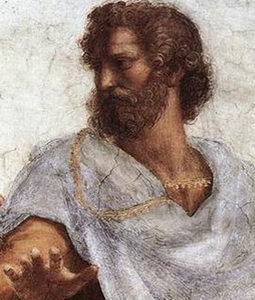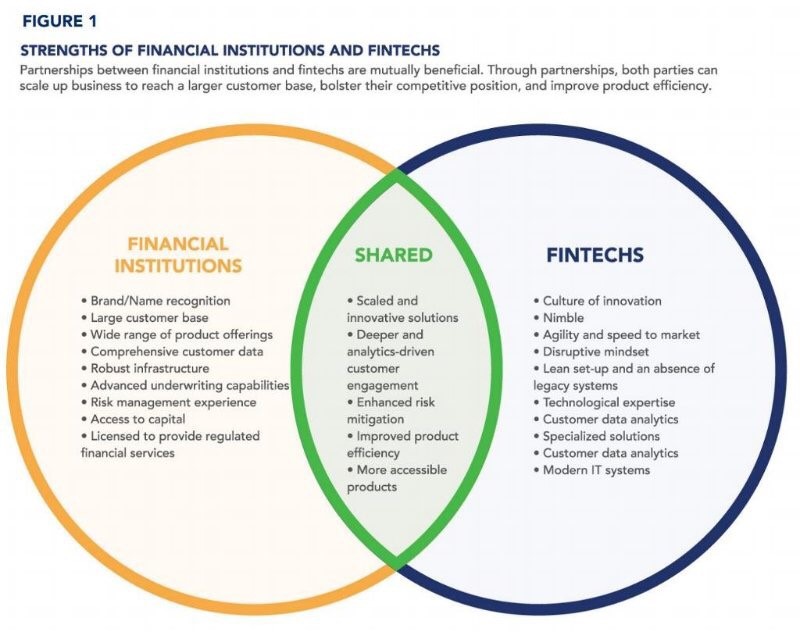
“A feast to which many contribute is better than a dinner provided out of a single purse. The many have a share of excellence and practical wisdom and, when they meet together, they become in a manner one man with regard to their character and thought”
Collective intelligence refers to the capability of a group to collaborate in order to achieve goals that an individual, even the most gifted, would not be able to accomplish alone.
Leadership seems to be not the achievement of one person, anymore. The Leader must be connected, to his intellectual pathfinders and bodyguards, to function effectively.
Collective intelligence communities are not exclusively human. From the ants’ anthill to the wolf pack, certain animal groups are demonstrating higher intelligence than their  individual components. Human groups can collectively organize and solve problems without a leader as they have been doing so e.g. in the case of an earthquake or a massive violent act like bombing.
individual components. Human groups can collectively organize and solve problems without a leader as they have been doing so e.g. in the case of an earthquake or a massive violent act like bombing.
Results are vastly improved when a small, multidisciplinary team is in charge.
The human collective capacity for higher intelligence can be conceived, developed, encoded and focused to enrich the awareness of the ever-transforming environment and create, through intelligence, the knowledge necessary to understand complexity. This is a prerequisite for survival and growth in the present, increasingly complicated and multipolar World.
The Board of Directors (BoD) of a Corporation will ever have the heavy responsibility of Stewardship as locum tenens of the Shareholders, to be the Custodian of Values, to ensure Intelligent Compliance, to build connections & bridges and act as the jury & ratifier of the Shareholder.
There is a new additional and vital requirement from a Board of Directors.
In the present and evolving realities of Corporate Leadership, a BoD is entrusted with a new and extremely challenging duty. To develop a collective intelligence, far superior from the individual intelligence of their members, to assist and guide the CEO and the other members of the C-suite to excellence in the performance of their work.
One of the most important things to understand in modern business is the concept of complexity.
There two types of complexity that are also interconnected:
- The increasing internal complexity of the Corporation as it strives to design and implement its business plans.
- The complexity of its outside environment, which presents this additional difficulty of random events that move often the external environment from complexity to chaos.
The best analog we can find for the modern BoD is the “shotgun rider” of the horse drawn coaches of the Far West. While the “coachman” CEO is focused in driving the horses, planning for the road ahead, the “shotgun rider” BoD, watches the surrounding environment. BoD like an early warning system, notices changes, threats, shelters and opportunities.
This scanning of the environment, a function of the Board of Directors can best be achieved by the complementarity of its members. They all contribute differently but in a targeted way to the common aim. Once the scanning of the BoD identifies possible opportunities or threats, the CEO and the C-suite can track them and envelop a Strategy for action.
This is the highest operational mode, the track while scan, mode. This can only be accomplished by design and development.
It follows from the above that in the selection of a BOD member, a demanding additional criterion should be added. That is the simultaneous Differentiation and Complementarity with the other members.
 The rate of knowledge generation is so fast that it is impossible for the CEO and the C-suite to track and monitor everything. Most of this knowledge is generated outside the Corporation but eventually, a significant part, is needed inside it. The CEO has limited time available for this. As the top executive he/she must successfully face the present problems prior to recognizing distant threats and opportunities.
The rate of knowledge generation is so fast that it is impossible for the CEO and the C-suite to track and monitor everything. Most of this knowledge is generated outside the Corporation but eventually, a significant part, is needed inside it. The CEO has limited time available for this. As the top executive he/she must successfully face the present problems prior to recognizing distant threats and opportunities.
The CEO and the C-suite have two missions: To Fight Entropy within the Corporation and Lead It Successfully.
 We are now riding the 4th Industrial Revolution. We can equally call it the 1st Intellectual Revolution because it is not so much the tangible part of Civilization that rapidly changes but the intangible one.
We are now riding the 4th Industrial Revolution. We can equally call it the 1st Intellectual Revolution because it is not so much the tangible part of Civilization that rapidly changes but the intangible one.
As in every Revolution, a new behavioral adaptation is called for. The Corporation is one of the first institutions to deal with this Challenge. Its present structure is not sufficient. Further to its internal strengthening with new knowledge absorption and exploitation capability, the need to be linked and relevant to a continuously more complex external environment, is mandatory.
To this, the Board of Directors can make a significant contribution. An enrichment and restructuring of the BoD is required. The BoD’s new duties are to create order and relevance from the knowledge-chaos that continuously emerges. They need to capture and filter, continuously, what is relevant to the Corporation, at an early stage.
Deep thinking is the only ethos to be adopted disengaging from the age of distraction. To be able to process information through evaluation, analysis and synthetic correlation; to create intelligence and combine intelligences to generate knowledge.
The CEO and the C-suite do not have the luxury to contemplate and process all the emerging new information, intelligence and knowledge.
A BoD adequately strengthened can do so.
The primary requirement in a successful Board composition is controlled diversity.
The second essential requirement is the capability of the board to work coherently for collective knowledge capture, combination and the development of intellectual added value.
The three principal parameters which distinguish a successful BoD are:
1. Structure
2. Selection
3. Development
1. STRUCTURE
The present period is a period of radical change. The core values for the composition of a BoD are valid but not enough.
The new required competencies from the BoD members of a large Corporation are among others:
- Knowledge and Understanding of Geopolitics, Geo-economics and World Strategic evolution.
- Knowledge and Understanding of Globalization, its tendencies, its instability and its limits.
- Knowledge and Understanding of Digitalization, Automation, AR, AI, Big Data and the whole Intelligence Revolution.
- Knowledge and Understanding of the Fluidity of World Financial Markets.
- Knowledge and Understanding of the new Enormous and Disruptive Technological Advances
- Knowledge and Understanding of the dramatic changes in Energy sources, Distribution and Consumption.
- Knowledge and Understanding of the fluid Legal & Regulatory transnational environment.
- Knowledge and Understanding of the new “hybrid” Economic Alliances as they form and disintegrate.
A BoD member is expected to be able to focus his/her Knowledge of the specific subject, by Understanding how and to what extend this Knowledge is relevant to the aims of the Corporation.
It follows from the above listing that the structure of a BoD must include members that can cover most, if not all, of the above gnostic fields.
The design of the structure of a BoD is defined, but not limited to, by the aims of a Corporation. It is obvious that a different composition is required for the BoD of a Bank and the BoD of a software Corporation.
Or is it?
Observe the following example: How to face the threat that, Banking now can increasingly be done by non-Banking entities?
 One notes that the only strengths Financial institutions possess that Fintech Companies do not are:
One notes that the only strengths Financial institutions possess that Fintech Companies do not are:
Risk management experience
Access to Capital
License to provide regulated Financial Services,
while none of the strengths of Fintech Companies can be found in Financial Institutions.
The conclusion from the above example is that, Banking needs now members conversant with Digital Technology and particularly Fintech. Words like Blockchain, Analytics and Loan granting algorithms, unknown five years ago to Banking BoDs, are now in the forefront of Banking. So where primarily the BoD Members of a Bank were financiers, lawyers and businessmen, a new type, the digital expert must be included.
This is just one example. It is so with any other Corporation, independently from the Business field of its operations. Additionally, there is a continuous need to renew the Corporation and find new Business fields.
2. Selection
The first prerequisite therefore is to find members that have the above knowledge and are talented enough, to be able to contribute to the increase of the collective Corporate awareness and understanding of both the operational tangible & intangible environment.
The search for such members is rather difficult. They are few and would participate in a BoD only if they find it challenging enough and in line with their personal aims and ambitions. When such an individual is identified, a Corporation should be able to compensate both in financial and non-financial terms.
The BoD is not a place for soloists and Divas. Ability to collaborate, constructively, with his/her peers, is a must for every BoD member.
Originality is equally an important parameter. There was a time that all Board members had a lot of common characteristics and were selected from the same “congregation”. This is not valid any more. Where experience was a principal choice factor, now knowledge of emerging Technologies and methods is equally important.
This is not only a dress code differentiation, it is a new and hopefully destabilizing presence that is required to force the traditional to blend with the new.
Some friction inside the Board is not only expected but also desired provided that it is finally constructive. A third party, as an extension to the Board, facilitating and moderating the process is a precondition to success.
3. Development
It is naïve to expect that a Board purposely composed from heterogeneous members will work smoothly from the start.
Every system operates on flawed and limited information. The new duty of a BoD is to improve the accuracy of the information, broaden its scope and synthesize it to a useful conclusion.
While every member of a Board is capable of analyzing a subject within his/her gnostic field, it is more difficult to get the members of the Board to synthesize all together. This, however, is what differentiates a modern, agile and successful Board, that exceeds the capabilities of a traditional one. It answers to the present, ever increasing and ever changing strategic choices of the Corporation.
What is required from a new BoD is to contribute to the creativity needed for a Corporation to survive and grow in our challenging times?
In his 1964 book, Arthur Koehler explained the anatomy of creativity as follow:
“The pattern underlying [the creative act] is the perceiving of a situation or idea, in two self-consistent but habitually incompatible frames of reference. The event, in which the two intersect, is made to vibrate simultaneously on two different wavelengths, as it were. While this unusual situation lasts, the event is not merely linked to one associative context, but bisociated with two. I have coined the term ‘bisociation’ in order to make a distinction between the routine skills of thinking on a single ‘plane,’ as it were, and the creative act which…always operates on more than one plane. The former can be called single-minded, the latter double-minded, transitory state of unstable equilibrium where the balance of both emotion and thought is disturbed “.
In the Board of Directors case of today and tomorrow, bisociation is not enough. Multisociation is nearer to the mark. The members of the Board have each to observe, think and analyze and then proceed to synthesize together.
This is not as difficult as it sounds. With suitable mentoring it can be developed.
 The first step is for the members to accept each other’s peculiarities and understand that their strength lies exactly in the different thought sequence that each member possesses.
The first step is for the members to accept each other’s peculiarities and understand that their strength lies exactly in the different thought sequence that each member possesses.
Gestalt psychology, is the basic technique for BoD collective knowledge development.
Gestalt theory emphasizes that the whole of anything is greater than its parts. That is, the attributes of the whole are not deducible from an analysis of the parts in isolation. The word Gestalt is used here to mean the way a thing has a “pattern” or “configuration”.
Understanding patterns and configuring collectively how those patterns affect the Corporation is the new, collective contribution of a BoD as a body, to the survival and growth of a Corporation.
Analyze collectively the external environment; chart the way forward by synthesizing the Corporate Strategy to maximize benefits while minimizing threats stemming from it. A simple example illustrates it.
Recently, in Health Care Business the big news has been the partnership of Jeff Bezos with Warren Buffett entering the industry.
This is certainly a disrupting event for Health Care.
Members of the BoD Of a major Health Care Corporation have been monitoring the hiring of Health Care specialists. When they detected that Bezos was massively hiring, they gave early warning to their Corporation that matters were about to be disrupted in the Health Care sector and adequate countermeasures were required.
This type of early warning is one of the great assists that a BoD can give to the CEO.
To develop a Board of Directors to fulfill its new responsibilities a mix of mentoring and learning activities are used.
Mentoring consists of explaining how Board members from different gnostic backgrounds & cultures can jointly develop a productive collective nucleus of Leadership and Change, networking between themselves and the top executives of a Company. This is an ongoing live intellectual exchange and intellectual build-up through a common understanding of the issues involved.
Learning consists of coaching in small groups, guided reflection on issues & roles, partnerships creation & assignments of collective problem solving.
Intellectual Cross fertilization is enriched from presentations by experts on issues that will become “hot’’ and are at present unnoticed.
To conclude, a Board of Directors and the C-suite cross cooperation, is similar to that of a lion pack or a wolf pack. Certain members of the pack (the BoD team) spread and search the areas for potential game. Once this appears, the hunting pack (C-suite) is informed and released.
The combination of the two networks is unbeatable.

